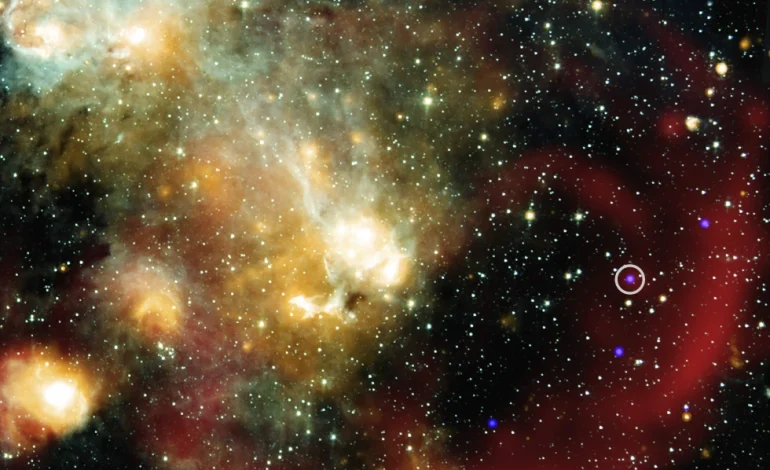Astronomers Detect Unusual Celestial Object Emitting Both X-rays and Radio Waves in the Milky Way

Astronomers have identified a mysterious new object within our Milky Way galaxy that exhibits highly unusual behavior, emitting both X-rays and radio waves in a repeating 44-minute cycle during periods of heightened activity, the Associated Press reports.
The discovery, reported Wednesday by an international research team, has raised new questions about the nature of such celestial phenomena.
The object, located approximately 15,000 light-years from Earth in a dense region of the galaxy filled with stars, gas, and dust, has been designated ASKAP J1832−091. Its exact identity remains unclear. Researchers suggest it could be a highly magnetized stellar remnant, such as a neutron star or white dwarf — both of which are known to emit high-energy radiation — or it may represent an entirely new class of astronomical objects.
“This could be something exotic that we’ve never seen before,” said Ziteng Andy Wang, an astrophysicist at Curtin University in Australia and lead author of the study published in the journal Nature. “While our discovery doesn’t yet solve the mystery of what these objects are, studying them brings us closer to two possibilities: either we are uncovering something entirely new, or we’re seeing a known type of object behaving in an unprecedented way.”
NASA’s Chandra X-ray Observatory first detected the X-ray signals by chance last year while observing a nearby supernova remnant — the remnants of an exploded star. The object’s emissions, however, do not necessarily indicate a direct connection to that remnant due to the uncertainty surrounding their relative distances.
ASKAP J1832−091 falls into a category known as “long-period radio transients,” a rare type of object characterized by emitting bursts of radio waves over long intervals. This discovery marks the first time such an object has been observed producing both X-ray and radio emissions in tandem.
The object’s most active phase appears to have lasted about a month, during which time it consistently emitted these signals every 44 minutes. Outside of that period, no significant X-ray activity was detected, suggesting that similar objects might exist undetected elsewhere in the galaxy, only becoming observable during short-lived, intense episodes.









The latest news in your social feeds
Subscribe to our social media platforms to stay tuned